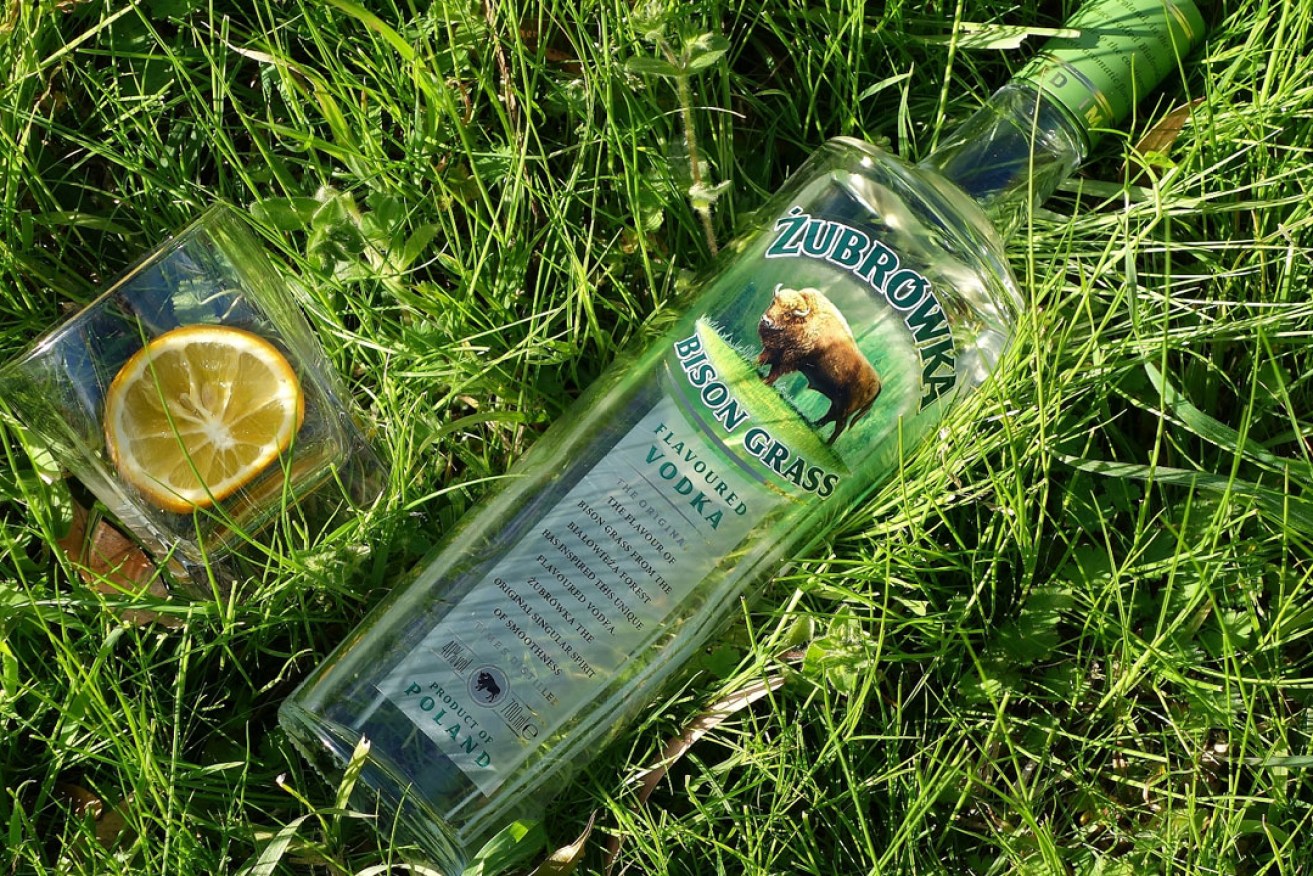Bitter-sweet: vodka with a hint of buffalo grass
Whitey’s back on the adults-only XXX Chardonnay substitute made from rye and buffalo grass. In Poland.


Żubrówka - perfect for spring. Photo: Philip White
Żubrówka Bison Grass Flavoured Vodka
($55 for 700ml; 40% alcohol; screw cap)
In the matter of stronger drink, spring is Żubrówka season at Casa Blanca.
Seven times distilled, this is the Polish rye vodka flavoured with Hierochloe odorata, the buffalo grass much beloved by the żubr, the rare European bison named Bison bonasus by Linnaeus in 1758. It’s also called the wisent, from the Viking visundr. There are precious few of these lumbering beasties left – they’re a protected threatened species – but every now and then one human hero or another will post a photograph of themselves with a żubr they’ve managed to slaughter with a high-velocity rifle.
Pretty hard to miss, the old żubr.
This trophy business has been going on a lot longer than the firearm: old Germanic tribes used żubr horns to make their battle helmets look more scary. Contrary to Hollywood myth, Vikings used sea eagle or raven’s wings on their bloodbuckets, not horns. They tended to use the horns they’d get from their enemies’ helmets as drinking vessels, after taking their first victorious draught from the sköl of the vanquished.
As far as herbal business goes, Hierochloe odorata had long been a favourite medication for humans. It was, and still is in some quarters, harvested for its natural phenylpropanoid, coumarin, an efficacious compound that works a bit like low doses of wormwood, Artemisia absinthium, in its calmative capacity.
Coumarin has been claimed to be analgesic and antiseptic. For centuries buffalo grass was used to ease seizures, settle heart palpitations, reduce oedema, shrink tumours, reinforce the immune system, kidneys and liver, soothe asthma and thicken ageing bones.
Like nettles, you can make tea or soup from it.
In the US, the Alcohol, Firearms and Tobacco people found that coumarin too closely resembled dicoumarol, a manufactured anti-coagulant which in huge doses causes internal bleeding and is used in rat poison. So in the US, Żubrówka is spared its natural flavourant, which is replaced by a synthetic essence, and sold simply as Żu. Even the single blade of buffalo grass which comes in every bottle in Australia and Europe is replaced by a strip of green plastic in the US.
For perspective, a teaspoon of cinnamon contains around 10mg of coumarin – not dicoumarol – while one litre of Żubrówka holds about 12mg. German health officials rule that humans can safely handle 0.1mg per kilogram of body weight per day, which means I’d have to consume about 1.5 litres per day of 40 per cent alcohol Żubrówka to even nudge the coumarin safety limit.
If you need inspiration, a healthy żubr of about one tonne weight devours about 30kg of the raw grass per day and is known for its ability to leap a 2m fence from a standing start.
As far as a drink goes, Żubrówka is nothing like other vodkas, flavoured or not. Without being too much of either, it’s bitter-sweet, with a comforting unction, after the nature of cold chamomile tea, which also happens to contain coumarin. The sweetness is an illusion: it’s more a slightly oily viscosity than your actual sugar.
Being a human who likes bitter flavours, like Campari, I quite enjoy a slow neat Żubrówka on an ice block.
It’s also alluring chilled with soda – it’s like a XXX-rated Chardonnay in some ways – and those who like a touch of true sweet in their bitters may enjoy it with lime juice or a dash of Bickfords. Blackcurrant also suits it, or cider. It’s great with a proper perry.
Garnish? Try a slice of lime or fresh ginger root.
Above all, it’s the alluring meadow perfume of Hierochloe odorata that gives Żubrówka its distinction, and made that grass an essential part of the ancient parfumier’s arsenal: as well as providing its own verdant plains aroma along with rye, it works as a fixer, stabilising other more fleeting floral fragrances.
So as you drink, share a ka-chink with your colleagues, toasting the few remaining żubr in the hope the buffalo grass keeps them leaping from the cross hairs of the jerks who insist on hunting them.
And you may well draw a second schluck in recollection of General Custer and his last foolish brigade, perishing there on a whole fragrant prairie of the stuff. That massacre at Little Big Horn was first known as the Battle of Greasy Grass. Breathing this soothing perfume, Custer and co bled to death there on the plain, long before the petrochem business even dreamed of dicoumarol.
Always best to reflect on such stupid plains wars with a natural soporific that can hoist a bison two metres, methinks.




